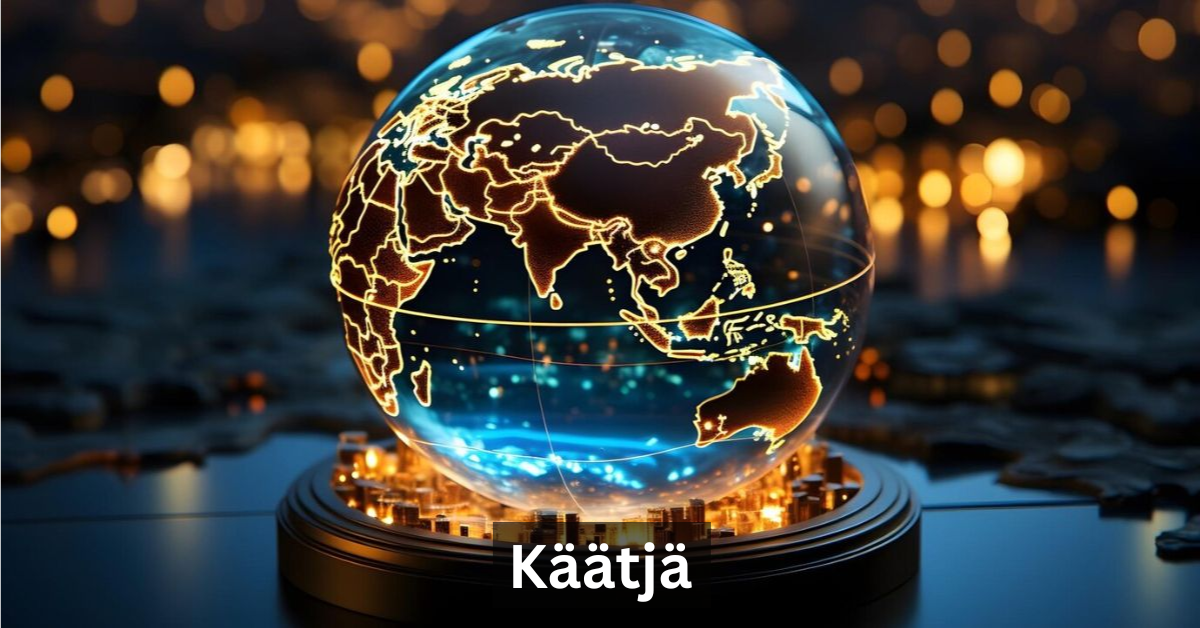Käätjä: The Future of Translation in a Globalized World
In a world that is becoming increasingly interconnected, communication across languages is essential. Translation tools have evolved significantly over the years, making it easier to understand and interact with individuals from different cultures and backgrounds. Among these advancements, Käätjä stands out as a revolutionary tool that promises to transform the world of translation. In this article, we’ll explore everything there is to know about Käätjä, its origins, its cutting-edge technology, and its potential to shape the future of multilingual communication.
What is Käätjä?
Käätjä is an innovative AI-powered translation tool designed to break down language barriers and offer seamless communication between speakers of different languages. Unlike traditional translation tools that often produce literal translations, Käätjä uses machine learning and AI-powered translation to deliver contextual translations that capture the true meaning of the source text.
One of the key features that sets Käätjä apart from other translation tools is its ability to incorporate cultural sensitivity into the translation process. This means that Käätjä doesn’t just translate words—it translates meanings, emotions, and tones, ensuring that the essence of the message is preserved.
Why Käätjä is Transforming the World of Translation
The advent of machine translation (MT) and AI-powered translation has greatly improved the accuracy and speed of translations. However, these technologies often fall short in handling cultural nuances, contextual subtleties, and local dialects. This is where Käätjä excels.
By blending AI with a deep understanding of cultural intelligence (CQ), Käätjä not only delivers accurate translations but also ensures that the translations are culturally appropriate. This means that users can trust Käätjä to handle complex translations, such as diplomatic communication or business negotiations, with confidence.
The Origin of Käätjä: A Finnish Language Innovation
Tracing the Roots of Käätjä in Finnish Culture
Käätjä draws inspiration from the Finnish language, a language known for its unique structure and rich cultural heritage. Finland has long been a leader in language technology, and Käätjä is a natural extension of the country’s commitment to innovation in this field.
The development of Käätjä was driven by the need for more accurate and culturally sensitive translations, particularly in a multilingual society. By tapping into the deep linguistic and cultural knowledge of Finnish researchers and engineers, Käätjä was born to meet the growing demands for global communication.
The Role of Finnish Heritage in Modern Translation Technology
Finland’s heritage has played a significant role in shaping Käätjä’s development. The Finnish language is known for its nuanced expressions and ability to convey deep emotional and cultural significance. Käätjä uses this rich linguistic framework to create language localization that preserves the integrity of the original message. This focus on cultural translation ensures that no matter what language you are speaking, Käätjä will provide a translation that respects both the language and the cultural context.
How Käätjä Works: Blending AI with Cultural Sensitivity
The Technology Behind Käätjä’s Translation Engine
At the heart of Käätjä is a sophisticated AI translation model that uses machine learning to process and understand languages. The engine analyzes the source text, breaking it down into its core components: syntax, tone, and meaning. From there, it generates a contextual translation that fits the cultural nuances of the target language.
Käätjä also makes use of semantic meaning and language precision to ensure that the translation captures not just the words but the intent behind them. This is particularly important in fields like diplomatic translation or multilingual business communication, where miscommunication can have significant consequences.
Artificial Intelligence (AI) and Machine Learning in Translation
AI and machine learning have revolutionized the field of translation, allowing tools like Käätjä to continuously improve as they are exposed to more language data. This allows Käätjä to adapt to new contexts, dialects, and emerging linguistic trends, ensuring that its translations remain accurate and up-to-date.
With the integration of machine learning in language processing, Käätjä can learn from each translation and improve its ability to recognize and handle complex language structures, idioms, and technical jargon.
The Significance of Cultural Sensitivity in Translation
Why Cultural Nuance Matters in Communication
In any form of communication, cultural differences play a crucial role in shaping the way messages are received and understood. Cultural sensitivity in translation ensures that the message is not lost in translation due to misunderstandings related to local customs, idiomatic expressions, or social norms.
Käätjä’s ability to understand and incorporate cultural adaptation into its translations makes it a valuable tool for businesses, diplomats, and individuals who need to communicate across cultures. Whether it’s a business translation for a multinational company or diplomatic translation for international organizations like the United Nations, Käätjä ensures that the message is clear and respectful.
How Käätjä Captures Context, Tone, and Subtleties
Unlike traditional translation tools like Google Translate or DeepL, which often produce translations that are overly literal, Käätjä’s advanced algorithms take into account tone and nuanced translations. This ability to capture contextual language understanding allows Käätjä to deliver translations that are not only linguistically accurate but also emotionally resonant.
For example, in multicultural engagement or global interaction, a simple phrase can have different connotations depending on the culture. Käätjä ensures that these subtleties are not overlooked, making it an invaluable tool for cross-lingual understanding.
Käätjä vs. Other Translation Tools
Comparing Käätjä to Google Translate, DeepL, and Other Tools
When compared to other popular translation tools like Google Translate or DeepL, Käätjä stands out for its AI-powered translation engine and cultural sensitivity. While tools like Google Translate may offer speed and convenience, they often fail to capture the cultural context or tone of the original text.
DeepL, another widely used tool, focuses on translation accuracy but lacks the depth of contextual translation and cultural intelligence that Käätjä provides. Käätjä’s ability to combine language diversity with cultural adaptation gives it a significant edge in more complex translation scenarios.
What Sets Käätjä Apart in Terms of Accuracy and Context
Käätjä’s key differentiator lies in its understanding of language precision and tone and nuance in translation. While Google Translate and DeepL may produce accurate translations, Käätjä goes further by ensuring that the translated text is not only correct but also culturally and contextually relevant. This makes it the preferred choice for business translation, diplomatic communication, and multilingual communication.
Applications of Käätjä in Real-World Scenarios
Käätjä in International Business and Diplomacy
Käätjä has proven to be a game-changer in the world of international business and diplomacy. Multinational companies, diplomats, and international organizations can rely on Käätjä for accurate translations that consider both the language and cultural nuances.
In business negotiations, where precision and cultural understanding are critical, Käätjä ensures that no message is lost in translation, thereby facilitating smooth multilingual business communication. Similarly, in diplomatic translation, where the stakes are high, Käätjä’s ability to provide contextual translations ensures that sensitive matters are handled with the utmost care.
The Impact of Käätjä in Cross-Cultural Communication
Käätjä has also made significant strides in promoting cross-cultural communication. By facilitating accurate and culturally sensitive translations, it enables people from different backgrounds to engage in meaningful conversations without the fear of misunderstanding or misrepresentation.
In today’s globalized world, where language barriers are often a significant obstacle, Käätjä serves as a powerful tool for overcoming these challenges and promoting mutual understanding.
The Role of Käätjä in Bridging Language Barriers
How Käätjä Supports Multilingual Communication
One of the key advantages of Käätjä is its ability to support multilingual communication. Whether for business, travel, or education, Käätjä makes it easy for individuals to communicate across different languages, breaking down barriers and creating opportunities for collaboration.
Käätjä’s real-time translation capabilities further enhance its effectiveness in global communication, allowing users to engage in live conversations with people who speak different languages.
Enhancing Global Interactions and Reducing Misunderstandings
The need for effective communication has never been more important. Käätjä helps reduce misunderstandings by providing language interoperability, ensuring that messages are not only translated correctly but also understood in the intended context. Whether it’s in business meetings, travel scenarios, or cultural exchanges, Käätjä fosters clear and respectful communication between people from diverse backgrounds.
The Future of Translation: What’s Next for Käätjä?
Predictions for AI and Machine Learning in Translation Tools
As technology continues to evolve, we can expect AI translation models to become even more sophisticated. Käätjä, with its focus on language precision and contextual translation, is poised to lead the way in this next phase of machine translation.
With continued advancements in language processing technology and machine learning in language processing, Käätjä will be able to handle an even broader range of languages and dialects, ensuring that global interaction becomes even more seamless.
How Käätjä Will Evolve to Meet the Demands of a Globalized World
As globalization accelerates, the demand for accurate, culturally sensitive translations will only grow. Käätjä will continue to evolve to meet these demands by incorporating new languages, expanding its AI translation models, and staying at the forefront of technological advancements in translation.
Privacy, Ethics, and the Responsibility of AI Translation
Addressing Ethical Concerns in Translation Technology
As with any AI-powered tool, there are ethical considerations to take into account. Käätjä is committed to ensuring ethical AI development and maintaining data privacy. By adhering to strict guidelines, Käätjä ensures that translations are not only accurate but also respect the privacy and rights of individuals.
Ensuring Data Privacy and Confidentiality in Translation
Käätjä takes privacy seriously, implementing state-of-the-art data protection measures to ensure that sensitive information remains confidential. Whether it’s for business, personal use, or diplomatic purposes, users can trust Käätjä to handle their data responsibly.
Why Businesses and Diplomats Choose Käätjä
Benefits of Using Käätjä in Multinational Organizations
Multinational companies rely on Käätjä for its accurate translations and contextual language understanding. By enabling smooth multilingual business communication, Käätjä helps organizations expand into new markets and build stronger international relationships.
Case Studies: Success Stories of Käätjä in Diplomacy and Business
In the realm of diplomacy and international business, Käätjä has helped bridge communication gaps in high-stakes negotiations and peace talks. By providing precise translations that capture cultural sensitivities, Käätjä has earned the trust of diplomats and international organizations alike.
Conclusion
Käätjä is more than just a translation tool—it’s a revolutionary platform that promises to change the way we communicate in a globalized world. By combining AI-powered translation, cultural intelligence, and language precision, Käätjä is leading the charge in creating a more interconnected and understanding world. Whether for business, diplomatic communication, or personal interactions, Käätjä is the tool of the future, offering a glimpse into a world where language is no longer a barrier but a bridge to greater opportunities and relationships.
Frequently Asked Questions
What Makes Käätjä Different from Google Translate and DeepL?
Käätjä stands out by providing contextual translations that consider both language accuracy and cultural sensitivity, unlike Google Translate and DeepL, which may miss subtle nuances.
How Does Käätjä Handle Complex Language Nuances?
Käätjä’s AI translation models are specifically designed to understand and adapt to contextual language and cultural subtleties, ensuring accurate translations in even the most complex scenarios.
Can Käätjä Be Used for Real-Time Translation in Business Meetings?
Yes! Käätjä offers real-time translation capabilities that are ideal for business meetings and multilingual interactions, making it easier for teams to collaborate across language barriers.
Is Käätjä Suitable for Professional Translation Services?
Absolutely. Käätjä is ideal for professional translation services, particularly in fields like business, diplomacy, and multicultural engagement, where precision and cultural understanding are essential.
Stay in touch to get more updates & alerts on EroMe! Thank you






